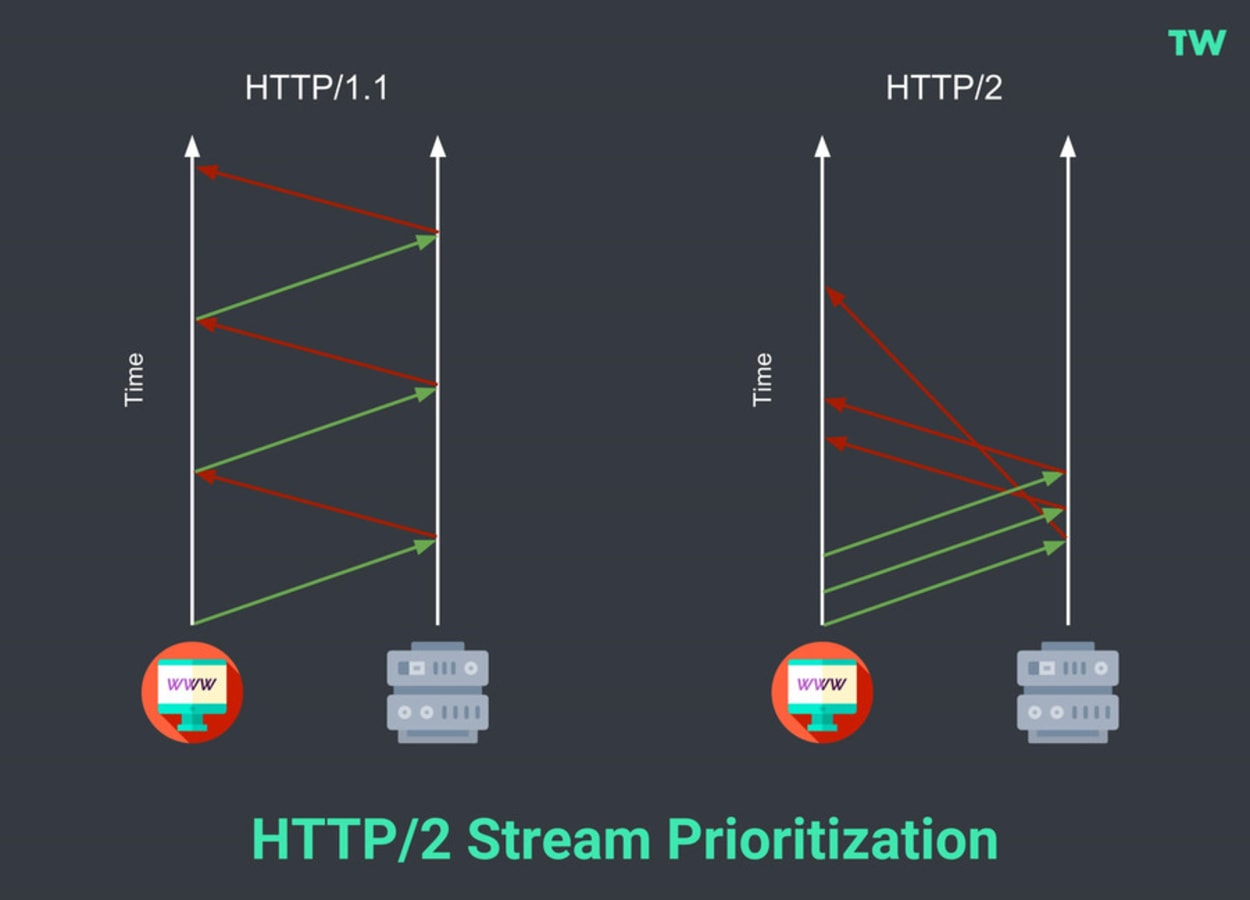
HTTP/2: Enhancing Web Performance for Software Engineers
HTTP/2, the successor to HTTP 1.1, has introduced several advancements aimed at addressing the limitations of its predecessor. Let's explore the inner workings of HTTP/2, its benefits, and its drawbacks.
How HTTP 1.1 Works
HTTP 1.1 operates on a request-response model over TCP, where each request opens a new TCP connection or reuses an existing one. While it introduced persistent connections and pipelining to improve upon HTTP 1.0, it still suffers from head-of-line blocking and lacks the ability to handle multiple requests in parallel effectively.
How HTTP/2 Works

HTTP/2 builds upon HTTP 1.1 and introduces several key features designed to enhance web performance:
- Multiplexing: HTTP/2 allows multiple requests and responses to be sent simultaneously over a single TCP connection, effectively eliminating the need for multiple connections and reducing resource consumption.
- Header Compression: Using the HPACK compression format, HTTP/2 reduces the size of headers, minimizing the overhead associated with data transmission.
- Server Push: This feature enables servers to proactively send resources to the client, potentially reducing the time to render pages by preempting client requests.
- Security: HTTP/2 is secure by default, often requiring the use of TLS encryption, which is negotiated using the Application-Layer Protocol Negotiation (ALPN) extension during the TLS handshake.

HTTP/2 Pros & Cons
Pros:
- Resource Optimization: By multiplexing over a single connection, HTTP/2 reduces the number of connections needed, saving resources on both the client and server sides.
- Efficient Data Transfer: Compression of headers and data leads to reduced latency and faster load times.
- Enhanced User Experience: Server push can improve the user experience by decreasing the wait time for resources.
- Security: The requirement for TLS with HTTP/2 promotes a more secure web environment.
Cons:
- TCP Head-of-Line Blocking: Despite multiplexing, HTTP/2 can still suffer from head-of-line blocking at the TCP level, as all streams are dependent on a single TCP connection.
- Underutilized Server Push: The server push feature has not been widely adopted and can sometimes lead to server resource waste if not implemented correctly.
- Increased CPU Usage: The complexity of HTTP/2's multiplexing and compression features can lead to higher CPU usage on servers.
H1 vs H2 Performance Test
Performance tests comparing HTTP 1.1 (H1) and HTTP/2 (H2) often demonstrate the superiority of HTTP/2 in terms of efficiency and speed. Multiplexing allows HTTP/2 to handle high volumes of requests with less overhead, and header compression significantly reduces the amount of data transferred. However, the real-world impact on performance can vary based on server configuration, content type, and network conditions.
Improving Website Performance with HTTP/2
HTTP/2, the successor to HTTP 1.1, brings significant enhancements that positively impact website performance. Let's delve into how HTTP/2 achieves this improvement based on insights from various sources:
- Reduced Latency: HTTP/2's multiplexing feature allows multiple requests and responses to be sent over a single connection simultaneously. This reduces latency by eliminating the need to establish multiple connections for each resource, leading to faster loading times for modern websites
- Header Compression: By eliminating redundant headers and compressing the remaining headers, HTTP/2 significantly reduces the amount of data repeated during a session. This optimization decreases the overhead associated with data transmission, resulting in faster and more efficient communication between clients and servers
- Enhanced Security: Browsers typically support HTTP/2 only for sites that use secure connections (HTTPS). This strengthens security by promoting the use of encrypted connections, ensuring data integrity and confidentiality during transmission
- Improved Efficiency: The core goals of HTTP/2 were to address performance and efficiency issues present in HTTP 1.1. By optimizing how data is transmitted between clients and servers, HTTP/2 boosts web performance by streamlining communication processes and reducing unnecessary data transfers
- Request Multiplexing: One of the key benefits of HTTP/2 is the ability to send multiple requests concurrently over a single connection. This feature minimizes latency between requests, allowing for more efficient utilization of network resources and faster loading times for websites
In conclusion, the adoption of HTTP/2 offers a range of performance benefits that collectively enhance website speed, efficiency, and user experience. By leveraging features like multiplexing, header compression, enhanced security through HTTPS adoption, and improved request handling, websites can achieve faster load times, reduced latency, and overall improved performance in today's digital landscape.
Conclusion for Software Engineers
HTTP/2 represents a significant step forward in web protocol design, offering numerous advantages over HTTP 1.1. As software engineers, understanding and leveraging the features of HTTP/2 can lead to more efficient and performant web applications. While there are some drawbacks, such as potential TCP head-of-line blocking and increased CPU usage, the overall benefits of HTTP/2 make it a compelling choice for modern web development. It's essential to consider these factors when architecting web solutions to ensure optimal performance and user experience.


